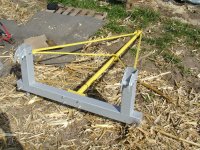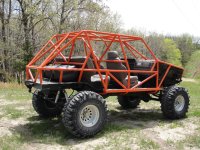The beam is going to buckle where the brace from underneath meets the beam. This is where the opposing forces are all greatest. Putting the truss support directly above this point sandwiches that point so that the truss support above pushes down to help counter the force of the brace pushing up.
Exactly. If the upwards and downwards forces are on the lower support then there is less stress on the main beam. There are calculations available to figure the capacities with and without the supports but you would need to know how much force a given piece could take. Important thing to know is that it dramatically increases the capacity.


